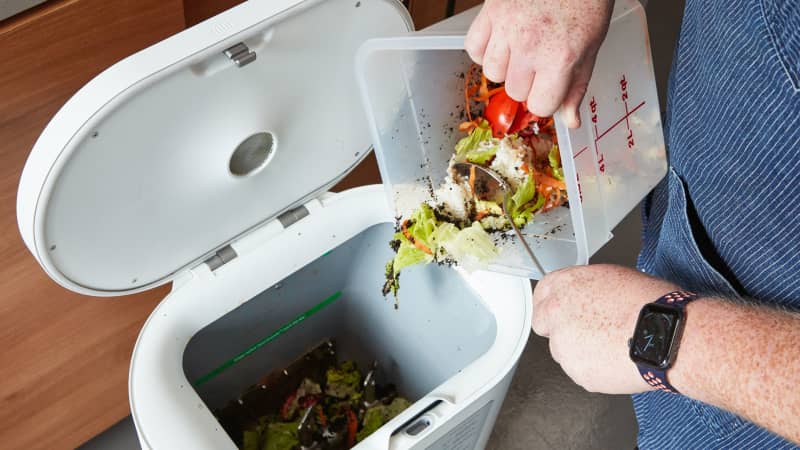The Best Countertop Compost Bins
Equipment Review
These indoor appliances are all the rage, but are they really the best solution to our food waste woes?
Published Jan. 2, 2024.

So-called indoor electric “composters” are designed to dehydrate and grind household food waste, making it less messy and smelly to dispose of. However, these machines aren’t able to re-create conventional composting. Instead of producing stable, nutrient-dense compost that can be safely added to soil, these appliances create dried, ground-up food that requires further curing and decomposition before it can be used for agriculture. We recommend that people seek out conventional composting options in their area rather than buying one of these devices.
The Food Waste Dilemma
Food waste is an enormous problem. According to the U.S. Environmental Protection Agency (EPA), uneaten food makes up more than 24 percent of our country’s municipal solid waste. That waste goes into landfills, where it rots and releases methane gas, contributing to planetary warming. Finding a more sustainable option for food waste disposal is one of the most effective ways that individual households can help mitigate climate change.
One option is composting: a process of recycling food waste using controlled decomposition, which, when managed properly, can reduce the amount of greenhouse gasses emitted by wasted food. Some people opt to compost on their own property using outdoor bins or piles, and some folks compost their food waste indoors in bins using worms or microbial colonies (a method known as bokashi). Others may use a municipal or third-party curbside pickup service, which collects their food waste and delivers it to a composting facility instead of a landfill.
How Do Electric “Composters” Work?
For those without easy access to conventional composting options, several appliance manufacturers have started selling so-called electric “composters.” These appliances—generally about the size of air fryers—are designed to collect, dehydrate, and grind up food waste, using roughly the same amount of electricity per cycle as a standard dishwasher.
To use these devices, you accumulate vegetable peels, table scraps, and other food waste in an included collection bin. You place the bin inside your machine and run a processing cycle that heats, dries, and grinds the food for anywhere between 3 and 10 hours. What’s left is a powdery, soil-like substance that many manufacturers liken to compost.
Our Testing Process
We set to work testing the machines, processing months’ worth of food waste. We evaluated how easy the appliances were to set up and operate, how well they dried out and ground up food scraps, and how simple they were to empty and clean. Overall we liked machines with larger capacities and quieter cycles that thoroughly ground u...

The mission of America’s Test Kitchen Reviews is to find the best equipment and ingredients for the home cook through rigorous, hands-on testing. We stand behind our winners so much that we even put our seal of approval on them.

Chase is an associate editor for ATK Reviews. He's an epidemiologist-turned-equipment tester and biscuit enthusiast.

This is a members' feature.